Old Clothes, New Life: Sewing Projects for Upcycling
Have you ever looked at your closet and felt overwhelmed by the number of clothes you own, many of which you rarely wear? Instead of tossing those old garments into the trash, why not give them a second chance? Upcycling is not just a trend; it’s a movement that encourages creativity and sustainability. By transforming your discarded clothes into something new and functional, you can not only reduce waste but also create unique items that reflect your personal style.
In this article, we explore a variety of sewing projects that breathe new life into old clothes. Whether you’re a seasoned seamstress or a beginner, there’s something here for everyone. We’ll guide you through the essential tools you need, the best fabrics to choose, and the basic sewing techniques that will help you succeed in your upcycling journey. So grab your sewing machine, dust off those old clothes, and let’s get started!
Upcycling is the process of repurposing discarded materials into new products, and it has gained significant traction in recent years as a way to combat environmental issues. With the fashion industry being one of the largest polluters in the world, upcycling provides a sustainable alternative to fast fashion. By choosing to upcycle, you are making a conscious decision to reduce waste, lower your carbon footprint, and promote a more sustainable lifestyle.
Imagine turning a worn-out shirt into a stylish tote bag or transforming a pair of jeans into a chic skirt. The possibilities are endless! Upcycling allows you to unleash your creativity while making a positive impact on the planet. It’s not just about saving money; it’s about embracing a lifestyle that values sustainability and innovation.
Before diving into your upcycling projects, it’s essential to equip yourself with the right tools. Having the right sewing tools and materials can make your experience more enjoyable and productive. Here are some must-have items for your upcycling toolkit:
- Sewing Machine: A reliable sewing machine is crucial for any sewing project.
- Fabric Scissors: Invest in a good pair of fabric scissors to ensure clean cuts.
- Measuring Tape: Accurate measurements are key to successful sewing.
- Needles and Thread: Stock up on various needle sizes and thread colors to match your fabrics.
- Seam Ripper: A seam ripper is handy for correcting mistakes.
With these tools in hand, you’ll be ready to tackle any upcycling project that comes your way!
When it comes to upcycling, selecting the right fabrics is key to achieving successful results. Look for garments made from high-quality materials, as they will be more durable and easier to work with. Consider the following tips when assessing your old clothes:
- Check for fabric content: Natural fibers like cotton, linen, and wool are often easier to sew and more sustainable than synthetic fabrics.
- Look for vibrant colors and interesting patterns that can enhance your projects.
- Don’t shy away from blending different fabrics; combining textures can create stunning results.
Understanding the condition of your garments is essential for determining their upcycling potential. Examine each piece for signs of wear and tear, such as:
- Holes or tears that can be creatively patched.
- Faded colors that can be revived with dye.
- Stains that can be covered with embellishments or turned into a different design.
By assessing the condition of your clothes, you can identify which items are worth upcycling and which may need to be recycled or discarded.
Color and pattern play a significant role in the aesthetics of your projects. Mixing and matching patterns can create a cohesive look while adding visual interest. Here are some tips to keep in mind:
- Stick to a color palette that complements each other.
- Experiment with different patterns, but try to balance busy prints with solid colors.
- Don’t be afraid to use contrasting colors for a bold statement!
Before you dive into complex projects, it’s essential to master some basic sewing techniques. Familiarize yourself with fundamental stitches, such as straight stitch, zigzag stitch, and backstitch. These techniques will serve as the foundation for your upcycling endeavors and ensure your projects are not only beautiful but also durable.
Now that you have a solid understanding of upcycling, let’s explore some creative projects that will inspire you to transform your old clothes into stylish and functional items.
T-shirts are incredibly versatile for upcycling. Here are a few creative ideas to turn old tees into fashionable accessories and home items:
- Tote Bags: Sew multiple T-shirts together to create a unique tote bag.
- Pillows: Use T-shirt fabric to make fun throw pillows for your couch.
- Headbands: Cut and braid T-shirt strips to create stylish headbands.
Denim is a durable fabric that lends itself well to upcycling. Consider these unique ways to repurpose old jeans:
- Jean Skirts: Cut and sew jeans into a trendy skirt.
- Reinforced Bags: Use denim to make sturdy bags that can carry heavy items.
- Patchwork Projects: Combine different denim pieces for a fun patchwork design.
Incorporating eco-friendly practices into your upcycling projects is vital for sustainability. Consider sourcing your materials from thrift stores or friends to minimize waste and promote a circular economy.
Natural dyes can enhance your upcycling projects while being environmentally friendly. You can create beautiful colors using common kitchen items like:
- Onion skins for yellow hues.
- Beets for vibrant reds.
- Avocado pits for soft pinks.
Efficiently minimizing waste during your sewing projects is essential for sustainability. Consider these tips to make the most of every fabric scrap:
- Save small pieces for patchwork projects.
- Use scraps for embellishments, like fabric flowers or appliques.
- Keep a scrap bin to store potential future project materials.
Q: What is upcycling?
A: Upcycling is the process of repurposing discarded materials into new products, giving them a second life and reducing waste.
Q: Can I upcycle any type of clothing?
A: Yes! Most clothing items can be upcycled, but it’s best to choose those made from high-quality materials for the best results.
Q: Do I need advanced sewing skills to upcycle?
A: Not at all! Basic sewing skills are sufficient, and many projects are beginner-friendly.
Q: Where can I find materials for upcycling?
A: Thrift stores, your own closet, and even friends’ wardrobes are great places to source materials for your upcycling projects.

Understanding Upcycling
Upcycling is more than just a trendy buzzword; it's a revolutionary approach to sustainability that breathes new life into discarded materials. Imagine taking an old, worn-out shirt and transforming it into a chic tote bag or a stylish cushion cover! This practice not only reduces waste but also encourages creativity and resourcefulness. In a world where fast fashion dominates, upcycling offers a refreshing alternative that allows us to cherish and repurpose the garments we already own.
At its core, upcycling is about giving **old clothes** a **new purpose**. It challenges the conventional mindset of simply throwing away items that have outlived their initial use. Instead, it invites us to see potential where others see waste. By reimagining these materials, we can create unique, functional items that reflect our personal style while contributing to a more sustainable future.
One of the most significant benefits of upcycling is its impact on the environment. The fashion industry is notorious for its wastefulness, generating millions of tons of textile waste each year. By choosing to upcycle, we can:
- Reduce landfill waste
- Minimize the demand for new materials
- Lower our carbon footprint
Moreover, upcycling fosters a sense of community and connection. Many upcyclers share their projects online, inspiring others to join the movement and share their creations. This sense of community not only promotes sustainable practices but also encourages collaboration and the exchange of ideas, making the upcycling journey even more enjoyable.
In a nutshell, understanding upcycling is about recognizing the value in what we already have. It's a call to action for everyone to rethink their consumption habits and to embrace creativity in the face of waste. So, the next time you look at that pile of old clothes in your closet, ask yourself: what new life can I give them? The possibilities are endless!
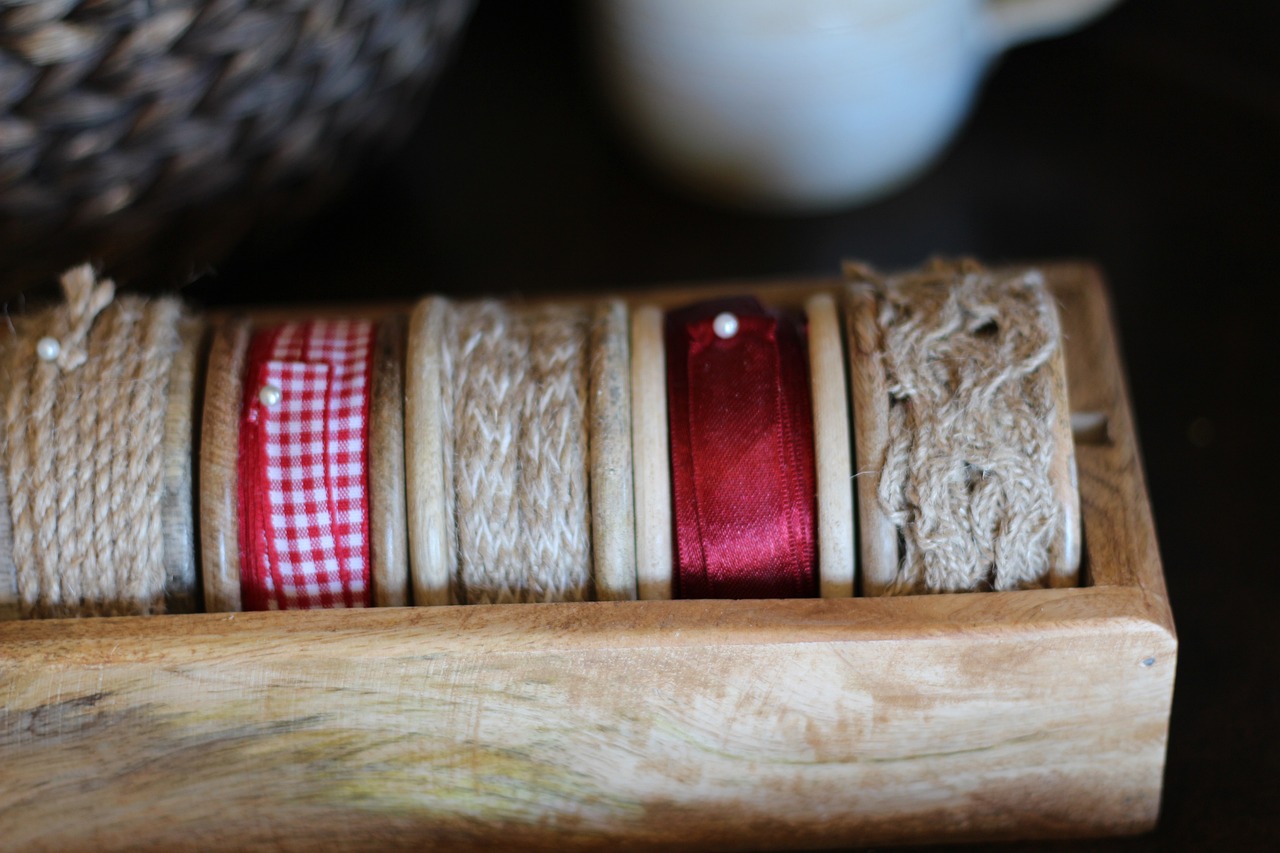
Essential Tools for Upcycling
Getting started with upcycling can feel like stepping into a treasure trove of creativity, but before you dive in, it's crucial to arm yourself with the right tools. Think of these tools as your trusty companions on this exciting journey of transformation. Whether you're turning an old shirt into a chic tote or repurposing jeans into a stylish skirt, having the right equipment can make all the difference. So, what do you need to kick off your upcycling adventure?
First and foremost, a quality sewing machine is essential. While you might be tempted to sew everything by hand, a sewing machine will save you time and provide a professional finish to your projects. If you're new to sewing, don't worry! There are plenty of user-friendly machines available that come with instructional manuals. Alongside your machine, a good set of sewing needles is vital. Different fabrics require different needle types, so having a variety on hand will help you tackle any project with ease.
Next up is fabric scissors, which are your best friend when it comes to cutting through layers of fabric. It's important to invest in a sharp pair because dull scissors can lead to frayed edges and uneven cuts. Additionally, don't forget about a rotary cutter and cutting mat. These tools are fantastic for making precise cuts, especially when you're working with patterns or multiple layers. Pair them with a ruler for straight lines, and you'll be slicing through fabric like a pro!
Measuring tools are equally important. A flexible measuring tape will help you take accurate measurements of your garments, ensuring that your new creations fit perfectly. For added precision, a clear quilting ruler can assist in measuring and cutting straight lines. And let’s not overlook the importance of pins and clips! These little helpers will keep your fabric pieces in place while you sew, preventing any unwanted shifts.
When it comes to embellishing your upcycled items, consider adding a sewing kit filled with threads in various colors, buttons, and embellishments. This will allow you to personalize your creations and add that special touch. Also, having a seam ripper on hand is a must. Mistakes happen, and this handy tool will help you correct them without damaging your fabric.
Finally, it’s wise to have a workspace that inspires creativity. A well-organized area with good lighting will make your sewing projects much more enjoyable. Consider setting up a dedicated sewing station where you can keep all your essential tools within arm's reach. Remember, the more comfortable and organized your space, the more likely you'll want to dive into your next upcycling project!
In summary, having the right tools can significantly enhance your upcycling experience. From sewing machines to fabric scissors, each item plays a crucial role in transforming your old clothes into something new and exciting. So gather your tools, unleash your creativity, and let the upcycling begin!
Q1: What is the best sewing machine for beginners?
A1: For beginners, a basic sewing machine with straightforward functions is ideal. Look for models with easy threading and a variety of stitch options to help you learn the basics without feeling overwhelmed.
Q2: Can I upcycle any type of fabric?
A2: Most fabrics can be upcycled, but it's best to choose those that are durable and in good condition. Cotton, denim, and linen are excellent choices due to their versatility and strength.
Q3: How can I ensure my upcycled items are eco-friendly?
A3: To make your projects more sustainable, use natural dyes, minimize waste, and choose second-hand fabrics. Additionally, consider using eco-friendly sewing supplies and techniques.
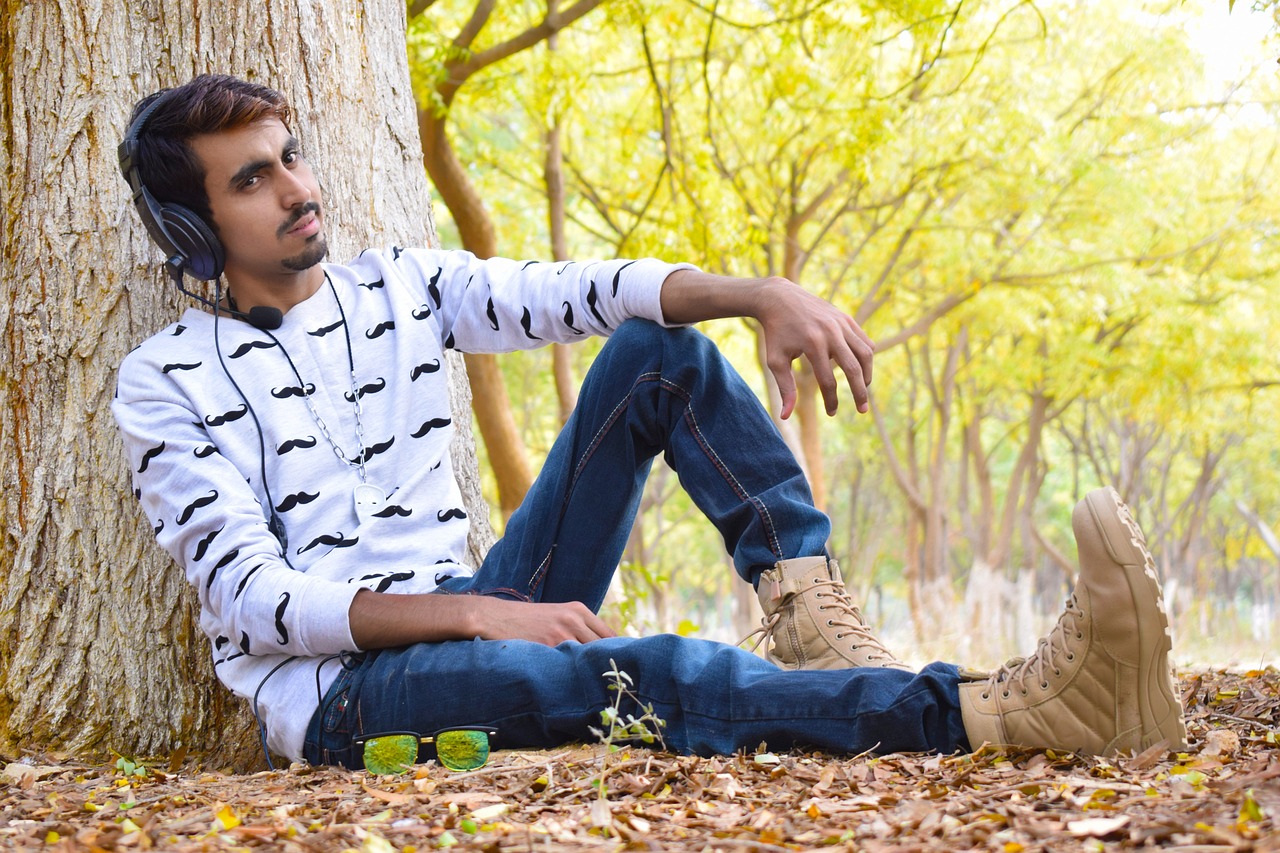
Choosing the Right Fabrics
When it comes to upcycling, choosing the right fabrics is like picking the perfect paint for a masterpiece. You want materials that not only look good but also have the durability to withstand transformation. The first step in this journey is to dive into your wardrobe and assess what you have. Look for clothes made from high-quality materials. Natural fibers like cotton, linen, and wool are often more suitable for upcycling because they tend to be durable and easier to work with. Synthetic fabrics like polyester can also be upcycled, but they may require special techniques due to their different properties.
As you sift through your old clothes, consider the condition of each item. Are there any stains or tears? While minor imperfections can often be creatively incorporated into your projects, heavily damaged items might not be worth the effort. Try to envision how each piece can be transformed. For instance, a faded denim jacket can become a chic tote bag, while a worn-out cotton dress might be turned into a trendy pillow cover.
Another crucial aspect is blending different fabrics. Mixing textures can add depth and interest to your projects. However, it’s important to choose fabrics that complement each other in terms of weight and stretch. For example, pairing a lightweight cotton with a heavier denim may not yield the best results. Instead, consider combinations like:
- Lightweight cotton with linen for a breathable summer bag.
- Denim with canvas for a sturdy backpack.
- Wool with cotton for cozy winter accessories.
Don’t forget about color and pattern! Your fabric choices can set the tone for your entire project. If you’re working with patterned fabrics, think about how they will interact with each other. Mixing bold patterns can create a fun, eclectic look, but it’s essential to maintain some balance. A good rule of thumb is to use a dominant pattern and pair it with smaller, subtler designs to avoid overwhelming the eye.
Finally, consider the environmental impact of your fabric choices. Opt for materials that are sustainably sourced or made from recycled fibers. This not only enhances the eco-friendliness of your upcycling projects but also tells a story about the care you put into your creations. By choosing the right fabrics, you’re not just making new items; you’re contributing to a more sustainable fashion future.
Q: Can I upcycle any type of fabric?
A: While you can upcycle various fabrics, natural fibers like cotton and linen are generally easier to work with and more durable. Synthetic fabrics can also be used, but they may require different techniques.
Q: How do I know if a fabric is suitable for upcycling?
A: Assess the fabric's condition, durability, and texture. Look for quality materials that can withstand the transformation process.
Q: What if I have a fabric that I love but it’s damaged?
A: Don’t despair! Many damaged items can be creatively repurposed. Consider how you can incorporate the damage into your design, or use it as a patch for another project.
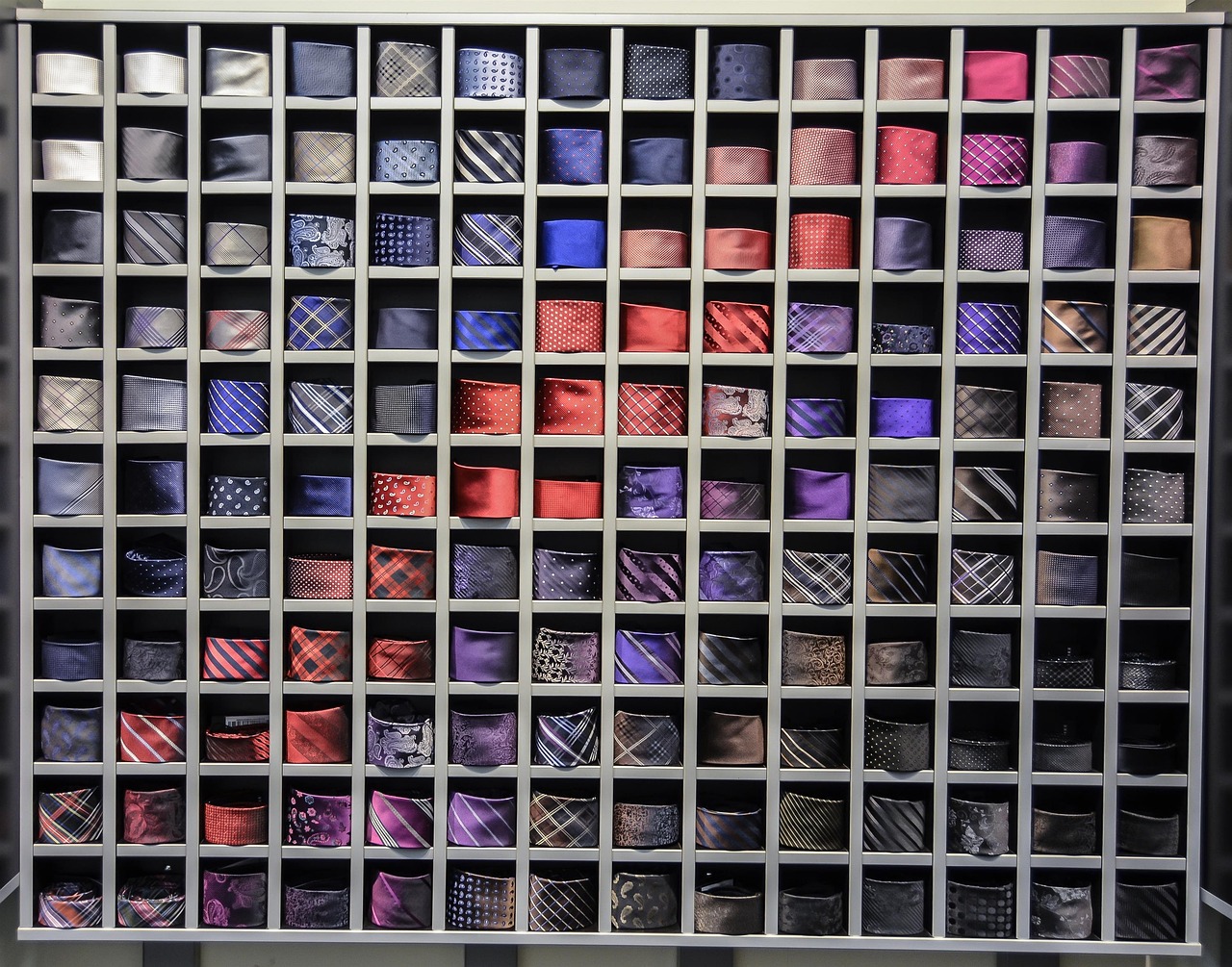
Assessing Wear and Tear
When it comes to upcycling, understanding the condition of your garments is crucial in determining their potential for a new life. Not all clothes are created equal, and some may be better suited for transformation than others. So, how do you assess wear and tear effectively? First, take a good look at the fabric. Is it frayed at the edges? Are there any visible stains or holes? These signs can give you a clue about whether the item is worth upcycling or if it’s better off being recycled or discarded.
Next, consider the garment's seams and stitching. If the seams are coming undone or the stitching is loose, it may require more effort to repair than it’s worth. However, if the fabric itself is in good condition, a little seam reinforcement might be all it needs to become something fabulous! Also, think about the garment's overall structure. Is it still holding its shape? A dress that has lost its form may not be the best candidate for upcycling into a fitted item, but it could be great for a flowy bag or cushion cover.
Another important aspect to consider is the fabric type. Some materials, like cotton and denim, are generally more durable and easier to work with than delicate fabrics like silk or chiffon. If you're working with a fabric that tends to fray easily, you might want to incorporate that into your design rather than trying to fight against it. For instance, a frayed edge can add a rustic charm to a bag or throw pillow.
To help you assess wear and tear more systematically, here’s a quick checklist:
- Fabric Condition: Look for frays, stains, or tears.
- Seams and Stitching: Check for loose threads or unravelling seams.
- Shape and Structure: Is the garment still holding its shape?
- Fabric Type: Consider durability and ease of working with the material.
By thoroughly assessing the wear and tear of your garments, you can make informed decisions about which items are ready for a makeover. Remember, the goal of upcycling is not just to create something new but to ensure that the transformation is sustainable and practical. So, take your time, evaluate your options, and let your creativity flow!
Q1: How can I tell if a garment is suitable for upcycling?
A1: Look for garments that have good fabric condition, sturdy seams, and a shape that can be easily transformed. If the fabric is worn out or has significant damage, it might not be a good candidate.
Q2: What are some common signs of wear and tear?
A2: Common signs include frayed edges, stains, holes, loose seams, and a loss of shape. Assess these factors to determine the garment’s upcycling potential.
Q3: Can I upcycle garments made from delicate fabrics?
A3: Yes, but it may require more skill and care. Delicate fabrics can be used for smaller projects or combined with sturdier materials for better durability.
Q4: How can I minimize waste during upcycling?
A4: Plan your projects carefully, use all fabric scraps creatively, and consider incorporating them into smaller items like patches or accessories.

Color and Pattern Considerations
When it comes to upcycling old clothes, color and pattern are not just aesthetic choices; they are the very essence of your creative transformation. Imagine taking a faded floral shirt and turning it into a vibrant tote bag, or mixing a striped dress with a polka-dotted fabric to create a playful patchwork blanket. The key is to embrace the unexpected and allow your imagination to run wild. However, there are a few guidelines to keep in mind to ensure that your projects not only look good but also feel cohesive.
First and foremost, consider the color wheel. Understanding basic color theory can significantly enhance your designs. For instance, complementary colors—those opposite each other on the color wheel—can create striking contrasts, while analogous colors—those next to each other—offer a more harmonious look. Here’s a quick reference table to help you visualize:
| Color | Complementary Color | Analogous Colors |
|---|---|---|
| Red | Green | Red-Orange, Red-Purple |
| Blue | Orange | Blue-Green, Blue-Purple |
| Yellow | Purple | Yellow-Orange, Yellow-Green |
Next, think about the patterns you want to mix. Combining different patterns can add depth and interest to your projects, but it’s essential to strike a balance. Here are some tips to consider:
- Scale Matters: Pair larger patterns with smaller ones. For example, a big floral print can be beautifully complemented by a tiny polka dot.
- Color Coordination: Ensure that the colors in your patterns coordinate well. This doesn’t mean they have to match perfectly; instead, they should complement each other.
- Texture Variation: Mixing textures can also enhance your design. A smooth fabric can contrast nicely with a rougher one, adding an exciting tactile element.
Finally, don’t be afraid to experiment! Sometimes, the most unexpected combinations can yield the most stunning results. Remember, upcycling is all about creativity and sustainability, so let your personality shine through your projects. Whether you’re creating a new outfit or a unique home decor piece, the right color and pattern choices can make all the difference in breathing new life into your old clothes.
Q: Can I mix patterns that are very different from each other?
A: Absolutely! Mixing different patterns can create a unique and eye-catching look. Just remember to keep the color palette cohesive.
Q: What if I’m not confident in my color choices?
A: Start with neutral colors as a base and then add pops of color through accessories or smaller pieces. This way, you can gradually build your confidence.
Q: How do I choose the right fabric for my project?
A: Look for fabrics that complement each other in terms of texture and weight. For example, pairing a lightweight cotton with a heavier denim can create an interesting contrast.
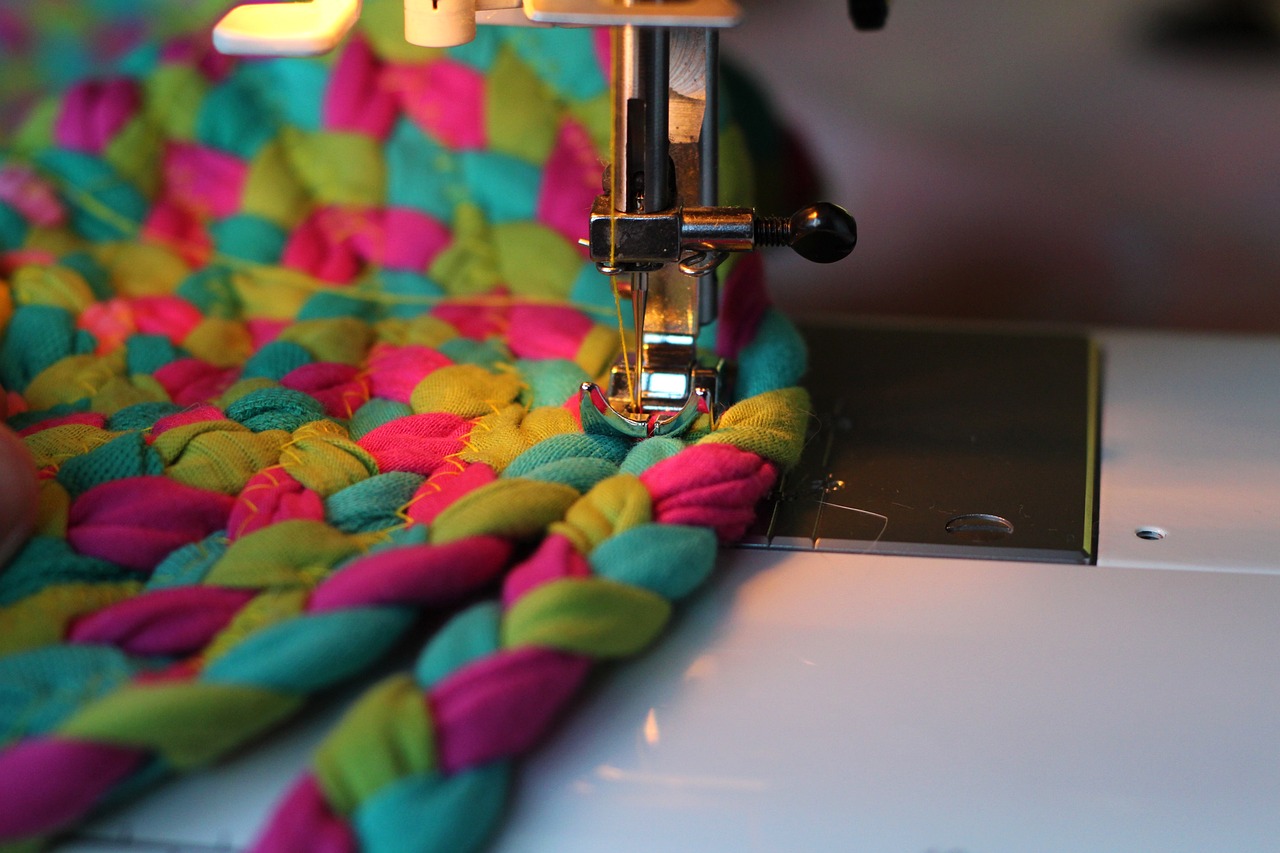
Basic Sewing Techniques
When it comes to upcycling, mastering basic sewing techniques is your golden ticket to transforming those old clothes into something fabulous. Think of sewing as the magic wand that can turn the mundane into the extraordinary! Whether you’re a seasoned pro or a total newbie, understanding these fundamental stitches and methods will set you on the path to creating unique, functional pieces that reflect your personal style.
First off, let’s talk about the most essential stitch: the straight stitch. This is your go-to for almost any sewing project. It’s like the bread and butter of sewing techniques! You can use it for seams, hems, and even decorative purposes. To execute a straight stitch, just keep your fabric aligned and guide it through your sewing machine or under your needle if you’re hand sewing. It’s all about keeping your lines neat and even.
Next up is the zigzag stitch, which is perfect for finishing edges and preventing fraying. Imagine this stitch as the armor for your fabric—protecting it from the wear and tear of everyday life. To use the zigzag stitch, adjust your sewing machine settings accordingly, and watch as it creates a beautiful, wavy line that not only looks good but also enhances the durability of your creations.
Another technique you’ll want to familiarize yourself with is the backstitch. This stitch is your secret weapon for added strength, especially in areas that experience a lot of stress, like seams. It’s like building a fortress around your stitches! To perform a backstitch, simply sew a small stitch forward, then go back and insert your needle into the end of the previous stitch. This will create a sturdy line that can withstand the test of time.
Now, let’s not forget about the importance of pressing your seams. This step is often overlooked but can make a world of difference in the final look of your project. Pressing helps to flatten seams and gives your garments a professional finish. Think of it as the cherry on top of your sewing sundae! Use an iron on the appropriate setting for your fabric type, and don’t be shy about using steam for stubborn wrinkles.
To keep things interesting, you might also want to explore decorative stitches. These can add a personal touch to your upcycled items, making them truly one-of-a-kind. Many sewing machines come equipped with a variety of decorative stitch options. Experiment with them on scrap fabric before using them on your main project to see which ones resonate with your style.
Finally, hand sewing is a skill worth mastering. While machines are fantastic, there’s something incredibly satisfying about stitching by hand. It gives you a level of control and precision that can be hard to achieve otherwise. Plus, it’s a great way to make repairs on the go or add intricate details to your upcycling projects. Basic hand sewing techniques include the running stitch, whip stitch, and slip stitch—each serving its unique purpose and adding character to your creations.
In conclusion, arming yourself with these basic sewing techniques is essential for your upcycling journey. They are the building blocks that will allow you to unleash your creativity and transform old garments into stunning new pieces. Remember, practice makes perfect, so don’t be afraid to experiment and have fun along the way!
- What is the best fabric for beginners to upcycle? Lightweight cotton or old T-shirts are great options as they are easy to sew and manipulate.
- Do I need a sewing machine to start upcycling? While a sewing machine can speed up the process, hand sewing is perfectly fine for smaller projects.
- Can I upcycle any type of clothing? Yes! Almost any garment can be upcycled, but consider the fabric type and condition for the best results.
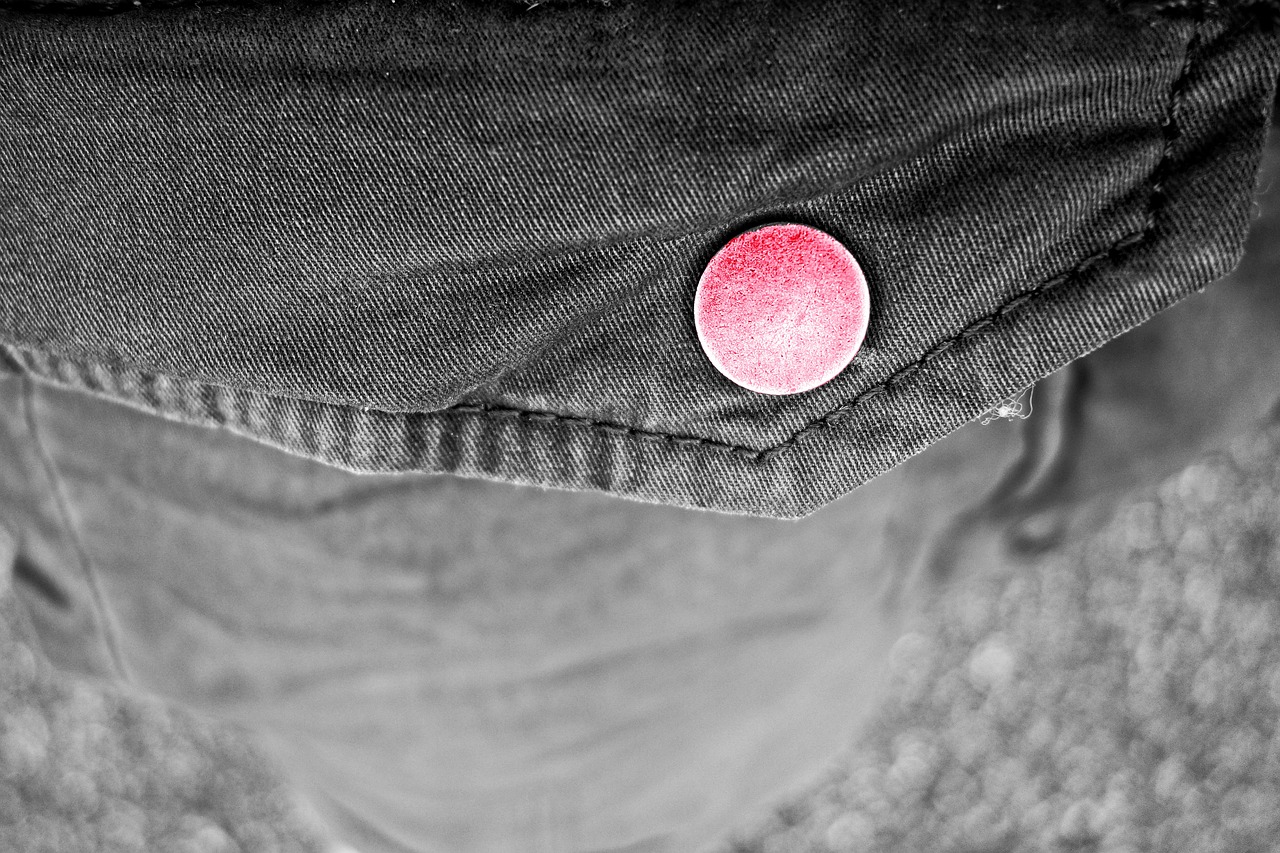
Creative Upcycling Ideas
When it comes to breathing new life into old clothes, the possibilities are as vast as your imagination! Upcycling is not just a trend; it's a creative revolution that allows you to transform what might otherwise end up in a landfill into something truly unique and functional. Whether you're looking to create a stylish accessory or a practical home item, there are countless ways to repurpose your old garments. Let’s dive into some innovative ideas that will inspire you to grab those forgotten pieces from the back of your closet!
One of the best places to start is with those trusty old T-shirts. They’re like blank canvases waiting for your artistic touch. Think about turning them into:
- Tote bags: Simply cut off the sleeves and neckline, then tie the bottom to create a sturdy bag perfect for groceries or beach days.
- Pillows: Sew two tees together and stuff them for a comfy cushion that adds a pop of personality to your living room.
- Headbands: Cut strips from the fabric, braid them together, and voilà—fashionable hair accessories that keep your hair in check!
Next up is denim, a fabric that’s not only durable but incredibly versatile for upcycling. Old jeans can be transformed into a variety of chic items. For instance, consider making:
- Denim skirts: Cut and sew the legs of your jeans to create a trendy skirt that’s perfect for summer.
- Recycled bags: Use the pockets and fabric to create unique handbags or backpacks that are both stylish and functional.
- Patchwork quilts: Gather various denim pieces and stitch them together to craft a cozy quilt that tells a story.
But don’t stop there! Think outside the box with your projects. How about transforming an old button-up shirt into a cute dress for your little one? Just cinch the waist with a belt and add some embellishments for a fun summer outfit. Or, if you have some old sweaters, you can turn them into mittens or cozy blankets to keep warm during colder months. The key is to let your creativity flow and not be afraid to experiment. After all, that’s where the magic happens!
As you embark on your upcycling journey, remember that the process itself is just as rewarding as the final product. It’s about embracing sustainability and giving those old clothes a fresh start. So, gather your tools, unleash your creativity, and watch as your old garments transform into something spectacular!
1. What types of clothing are best for upcycling?
Generally, any clothing that has some life left in it can be upcycled. T-shirts, jeans, and sweaters are particularly popular due to their versatility and durability.
2. Do I need special skills to start upcycling?
Not at all! Basic sewing skills are helpful, but many projects can be completed with simple cutting and tying techniques. Just start small and build your skills as you go!
3. How can I ensure my upcycled projects are eco-friendly?
You can ensure eco-friendliness by using natural dyes, minimizing waste, and sourcing materials locally when possible. Additionally, consider donating any scraps or items you can’t use.
4. Can I sell my upcycled creations?
Absolutely! Many people sell their upcycled items online or at local craft fairs. Just make sure to market them as unique, sustainable products that tell a story!

Transforming T-Shirts
When it comes to upcycling, t-shirts are often the unsung heroes of our wardrobes. These versatile garments can be transformed into a myriad of stylish and functional items, making them perfect candidates for your next DIY project. Whether you have old tees that no longer fit, have faded designs, or simply don’t match your current style, the possibilities are endless! Imagine turning that beloved band t-shirt into a trendy tote bag or a cozy pillow cover. Exciting, right?
One of the simplest yet most effective transformations is creating a tote bag. All you need to do is cut off the sleeves and neckline, then sew the bottom shut. Voila! You have a unique bag that tells a story. This project not only helps you declutter but also allows you to carry a piece of your past with you in a functional way. You can even add embellishments or pockets for a personalized touch.
Another fantastic idea is to make no-sew t-shirt scarves. Just cut the shirt into strips and braid them together. This technique is not only easy but also allows for endless customization in terms of color and texture. You can create a fashion statement that is both eco-friendly and uniquely yours. Plus, it’s a great way to use up those tees that you can't bear to part with!
If you're feeling a bit more adventurous, consider turning your t-shirts into pillow covers. Simply cut the shirt to size, sew or tie it shut, and you have a cozy addition to your living space. This is an excellent way to preserve memories associated with specific shirts, like those from concerts or trips, giving your home a personal touch.
For those who enjoy a bit of sewing, transforming a t-shirt into a dress or skirt can be a rewarding challenge. By combining several shirts or strategically cutting and sewing, you can create a one-of-a-kind piece that showcases your creativity. This project not only revamps your wardrobe but also allows you to express your personal style in a sustainable way.
To inspire your creativity, here’s a quick table of transformation ideas:
| Transformation Idea | Description |
|---|---|
| Tote Bag | Cut sleeves and neckline, sew bottom shut. |
| No-Sew Scarf | Cut into strips, braid them together. |
| Pillow Cover | Cut to size, sew or tie shut. |
| Dress/Skirt | Combine shirts, cut and sew for a new look. |
In conclusion, transforming t-shirts is not only a fun and creative endeavor but also a fantastic way to practice sustainability. By breathing new life into old garments, you’re contributing to a more eco-friendly fashion industry. So, the next time you’re about to toss out that old tee, think twice! With a little imagination and some simple techniques, you can create something beautiful and functional that reflects your personality.
Q: Do I need to be an expert sewer to upcycle t-shirts?
A: Not at all! Many t-shirt transformations can be done with minimal sewing skills, and there are plenty of no-sew options available.
Q: What tools do I need for t-shirt upcycling?
A: Basic tools include scissors, a sewing machine (if you choose to sew), and fabric glue for no-sew projects. Optional tools can include embellishments like buttons or fabric paint.
Q: Can I use any type of t-shirt for upcycling?
A: Yes! However, consider the fabric's quality and condition. T-shirts made from cotton or cotton blends are typically the easiest to work with.
Q: Where can I find inspiration for t-shirt upcycling projects?
A: Websites like Pinterest, DIY blogs, and YouTube are great resources for tutorials and inspiration.

Repurposing Denim
Denim is one of those fabrics that seems to get better with age, much like a fine wine. It’s durable, versatile, and when it comes to upcycling, the possibilities are practically limitless! Have you ever looked at an old pair of jeans and thought, "What can I do with these?" Well, you're in for a treat! Repurposing denim not only gives a new life to your worn-out garments but also allows you to create unique, stylish items that reflect your personality.
One of the most popular ways to breathe new life into denim is by transforming old jeans into trendy bags. Imagine turning those faded, frayed jeans into a chic tote or a stylish crossbody bag! All you need are some basic sewing skills and a little creativity. Cut the legs off your jeans, sew the bottom shut, and voilà! You have a bag that’s not only functional but also a conversation starter. You can even add pockets for extra flair or embellish it with patches for that personalized touch.
But why stop at bags? Denim can be repurposed into a variety of items, including:
- Skirts: With a bit of cutting and sewing, you can create a fashionable denim skirt that’s perfect for summer outings.
- Aprons: If you love cooking or crafting, a denim apron can be both stylish and practical, protecting your clothes while you work.
- Home Decor: Think cushion covers, table runners, or even wall art! Denim can add a rustic charm to your home.
- Accessories: From headbands to keychains, the options are endless when it comes to creating small accessories from denim scraps.
When repurposing denim, it’s essential to consider the weight and texture of the fabric. Heavier denim is great for bags and home decor, while lighter denim can be used for clothing items. Mixing different shades of denim can create a beautiful, layered effect in your projects, making them visually interesting and unique.
Additionally, don’t forget to incorporate your personal style. Whether you prefer a bohemian vibe or a more polished look, your repurposed denim can reflect that. Use embellishments like beads, lace, or even fabric paint to customize your creations further. The key is to let your imagination run wild!
In the world of upcycling, repurposing denim not only helps reduce waste but also allows you to express your creativity. So the next time you find yourself with an old pair of jeans, think twice before tossing them out. With a little effort and some sewing skills, you can turn those jeans into something fabulous that you’ll cherish for years to come.
Q: What tools do I need for repurposing denim?
A: Basic sewing tools such as scissors, a sewing machine, needles, and thread are essential. You might also want fabric glue for quick fixes and embellishments.
Q: Can I use any type of denim for upcycling?
A: Yes! While heavier denim is great for sturdy items like bags, lighter denim works well for clothing and accessories. Just assess the wear and tear before starting your project.
Q: How can I ensure my denim projects are eco-friendly?
A: Use natural dyes, minimize fabric waste by planning your cuts, and consider sourcing your denim from thrift stores to reduce new fabric production.

Eco-Friendly Practices
In today's world, where environmental concerns are at an all-time high, incorporating into your upcycling projects is not just a trend; it's a necessity. By making conscious choices, you can significantly reduce your carbon footprint and contribute to a more sustainable future. So, how can we ensure that our creative endeavors are also kind to the planet? Let's dive into some essential eco-friendly practices that can elevate your upcycling game.
First and foremost, consider the materials you choose for your projects. Sourcing natural fabrics such as cotton, linen, or hemp can make a world of difference. These materials are biodegradable and often produced with fewer harmful chemicals than synthetic options. Moreover, they tend to be more durable, meaning your upcycled creations will last longer, reducing the need for future replacements. When rummaging through your old clothes, look for items made from these sustainable materials to give them a new lease on life.
Another critical aspect of eco-friendly upcycling is waste reduction. It's all about making the most out of what you have. When cutting fabric, try to plan your patterns strategically to minimize scraps. For instance, if you're transforming an old shirt into a bag, consider how you can use the remaining fabric for smaller items like pouches or hair accessories. Every little piece counts, and by creatively utilizing leftovers, you can reduce waste significantly. Here’s a simple table to illustrate how you can maximize fabric use:
| Original Item | Upcycled Project | Scraps Utilized |
|---|---|---|
| Old T-Shirt | Tote Bag | Hair Scrunchies, Coasters |
| Denim Jeans | Messenger Bag | Patchwork Pillow, Keychain |
| Button-Up Shirt | Apron | Fabric Baskets, Napkins |
Furthermore, consider utilizing natural dyes in your upcycling projects. Not only do they offer a more sustainable alternative to synthetic dyes, but they also allow you to create unique colors that reflect your personal style. You can use kitchen items like beetroot, turmeric, or avocado skins to achieve beautiful hues. For example, beetroot can give a stunning deep pink, while turmeric provides a vibrant yellow. It’s like having a mini art studio right in your kitchen!
Lastly, remember that your sewing techniques can also impact the environment. Opt for hand-sewing when possible, as it often requires less energy than machine sewing. Plus, it gives you greater control over your fabric and design. If you do use a sewing machine, ensure it’s well-maintained to operate efficiently, reducing energy consumption. By adopting these eco-friendly practices, not only will you create stunning upcycled items, but you'll also be doing your part in preserving our beautiful planet.
- What is upcycling? Upcycling is the process of creatively reusing discarded materials to create new products, giving them a second life and reducing waste.
- How can I ensure my upcycling projects are eco-friendly? Focus on using natural materials, reduce waste by planning your cuts wisely, and consider using natural dyes.
- Can I upcycle any type of clothing? Yes! Most clothing can be upcycled, but consider the fabric type and condition to determine the best projects.
- What tools do I need for upcycling? Basic sewing tools like scissors, needles, thread, and a sewing machine (if available) are essential for most projects.
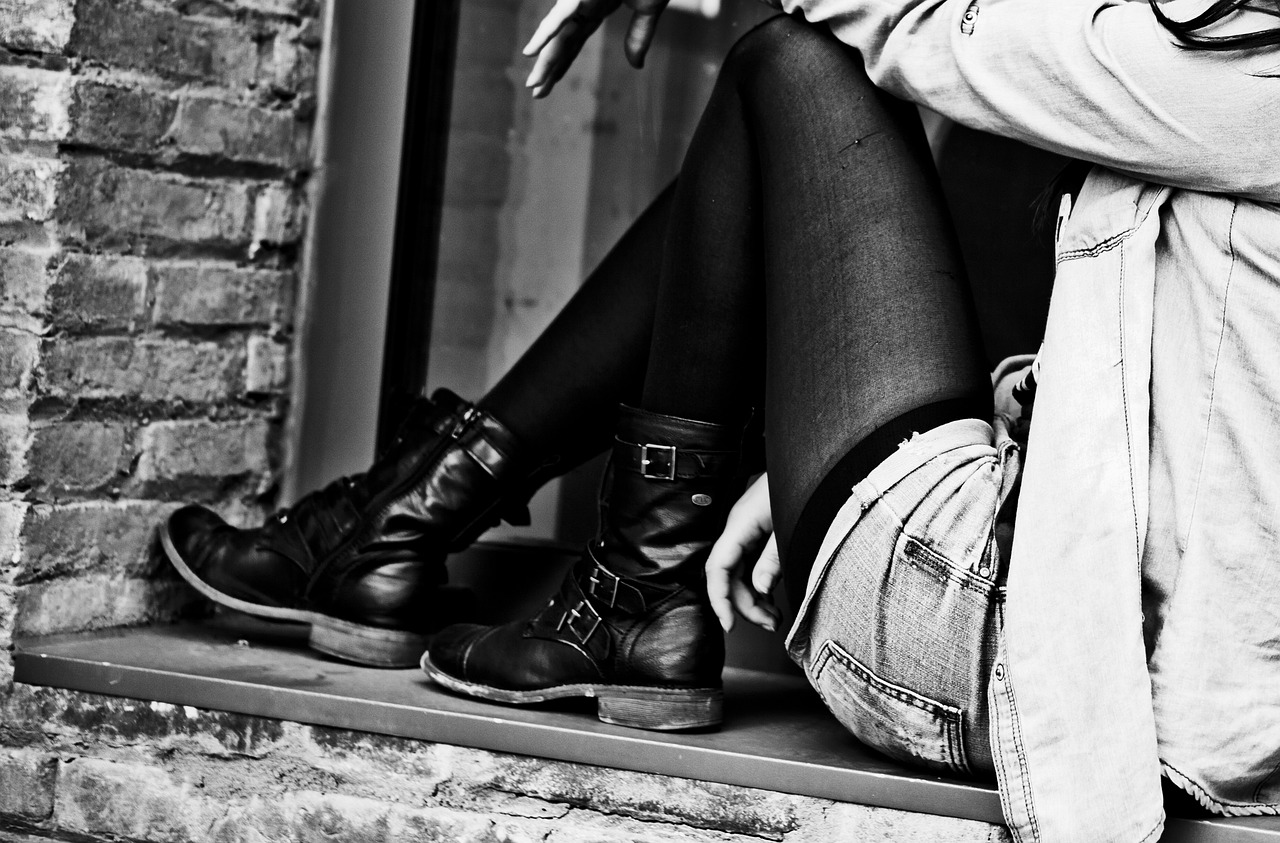
Using Natural Dyes
When it comes to upcycling, one of the most exciting aspects is the opportunity to add a splash of color using natural dyes. Not only do these dyes enhance the aesthetic appeal of your projects, but they also align perfectly with the eco-friendly ethos of upcycling. Imagine transforming a plain, faded piece of fabric into a vibrant statement item, all while using materials that are safe for the environment. Natural dyes can be derived from a variety of sources, including fruits, vegetables, and even spices found in your kitchen.
For instance, did you know that onion skins can produce a rich golden hue? Or that beetroot can yield a lovely pinkish-red? The beauty of using natural dyes is that they are often readily available and can be a fun experiment. You can create your own dye bath by boiling these materials in water, straining the mixture, and then immersing your fabric. The process not only allows you to achieve unique colors but also gives you a sense of satisfaction knowing that you are using biodegradable materials.
Here’s a quick guide on some common natural dye sources and the colors they produce:
| Natural Dye Source | Color Produced |
|---|---|
| Onion Skins | Yellow to Orange |
| Beetroot | Pink to Red |
| Avocado Pits | Peach to Pink |
| Turmeric | Bright Yellow |
| Red Cabbage | Blue to Purple |
To ensure your colors are vibrant and long-lasting, it's important to prepare your fabric properly. Pre-soaking your fabric in a mordant solution helps the dye adhere better. Common mordants include alum and vinegar, which can be both effective and safe. After dyeing, rinse your fabric in cold water to set the color, and you’ll be amazed at the results!
If you’re feeling adventurous, consider experimenting with tie-dye techniques or shibori, which can create stunning patterns and textures. By combining these techniques with natural dyes, you can elevate your upcycling projects to a whole new level. It’s not just about giving old clothes a new life; it’s about making them into something truly special and unique. So, roll up your sleeves, gather some kitchen scraps, and let your creativity flow!
As you embark on your natural dyeing journey, remember to document your process. Take notes on the dye sources you use, the fabric types, and the results you achieve. This way, you can refine your techniques and discover the best combinations that work for you. Plus, sharing your experiences can inspire others to explore the wonderful world of natural dyes in their upcycling projects.
Q: Are natural dyes safe to use on all fabrics?
A: While natural dyes can be used on many fabrics, they work best on natural fibers like cotton, linen, and silk. Synthetic fabrics may not absorb the dyes as effectively.
Q: How long do natural dyes last?
A: The longevity of natural dyes can vary based on the mordant used and how the fabric is cared for. With proper care, colors can last for several washes, but some fading may occur over time.
Q: Can I use leftover food scraps for dyeing?
A: Absolutely! Leftover vegetable peels, fruit skins, and even coffee grounds can all be used to create beautiful dyes, making your upcycling even more sustainable.
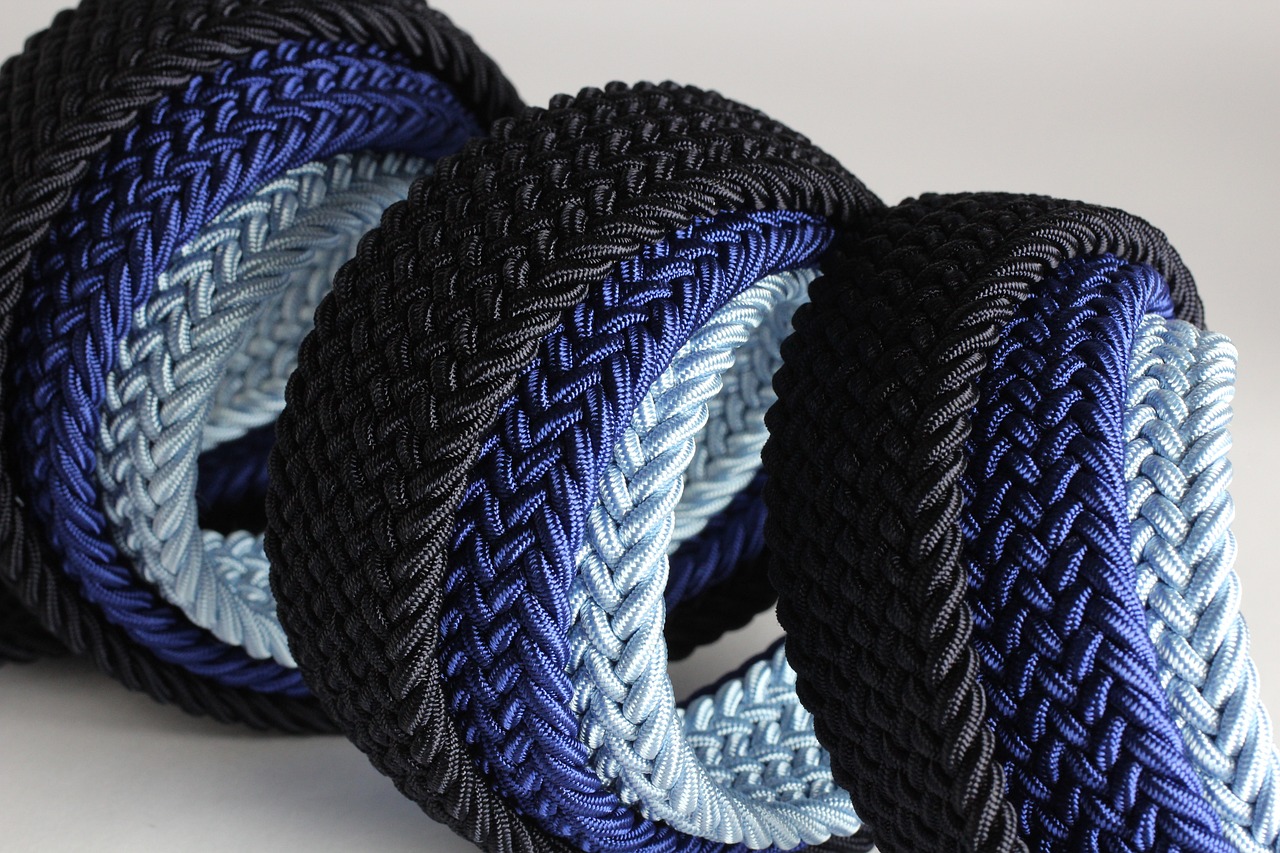
Minimizing Waste
In the world of upcycling, is not just a best practice; it's a vital part of the journey toward sustainability. Every scrap of fabric, every thread, and every button can be transformed into something new and beautiful. Imagine this: instead of tossing your old clothes into the landfill, you can give them a new purpose, creating unique items that tell a story. The key to achieving this lies in your approach and mindset.
One effective strategy is to carefully plan your projects. Before you start cutting into your garments, take a moment to visualize the end product. This not only helps in reducing waste but also sparks creativity. For instance, if you're working with a pair of jeans, think about all the parts you can use:
- The legs can be turned into a stylish bag.
- The pockets can be repurposed as small pouches.
- The waistband can be transformed into a headband or belt.
By breaking down a single piece of clothing into multiple components, you can maximize its potential and keep waste to a minimum.
Another essential practice is to utilize scrap fabrics. These remnants can be combined to create patchwork designs, which are not only trendy but also a fantastic way to showcase your creativity. Imagine a quilt made from various fabric scraps, each piece reflecting a memory or a moment in time. The beauty of patchwork is that it allows you to experiment with colors and textures without the fear of waste. You can even create small items like coasters, keychains, or fabric bookmarks from these scraps, ensuring that nothing goes to waste.
Moreover, consider incorporating upcycling techniques such as fabric weaving or braiding. These methods can transform even the tiniest scraps into something functional. For example, you can braid strips of fabric to create a unique rug or a decorative basket. This not only minimizes waste but also adds a personal touch to your home decor.
Lastly, always remember to keep an eye on your sewing practices. Using a sewing machine can help you achieve precision, but hand-sewing can be just as effective, especially for smaller projects. Hand-sewing allows you to control the amount of fabric you use, which can help reduce waste. Additionally, consider using eco-friendly threads and materials that align with your sustainable goals.
By adopting these practices, you can confidently embark on your upcycling journey, knowing that you're contributing to a healthier planet while also expressing your creativity. Remember, every small step counts in the quest for sustainability!
Q: What is upcycling?
A: Upcycling is the process of transforming old or discarded materials into new products, often enhancing their value and functionality.
Q: How can I minimize waste while upcycling?
A: You can minimize waste by planning your projects carefully, utilizing scrap fabrics, and employing upcycling techniques like patchwork and braiding.
Q: What tools do I need for upcycling?
A: Essential tools include a sewing machine, scissors, fabric glue, and basic sewing supplies like needles, threads, and pins.
Q: Can I use any type of fabric for upcycling?
A: While you can use various fabrics, it's best to choose durable materials that can withstand the upcycling process, such as denim, cotton, and linen.
Q: Are there eco-friendly practices I should follow?
A: Yes, consider using natural dyes, sourcing materials sustainably, and reducing waste by using every part of the fabric.
Frequently Asked Questions
- What is upcycling and why is it important?
Upcycling is the creative process of transforming discarded materials into new, functional products. It's important because it helps reduce waste, promotes sustainability in fashion, and encourages a more mindful approach to consumption. Instead of throwing away old clothes, you can give them a new life and reduce your environmental footprint.
- What tools do I need to start upcycling?
To kick off your upcycling journey, you'll need some essential sewing tools. These include a sewing machine, scissors, pins, measuring tape, and a seam ripper. Additionally, having a variety of threads and needles suited for different fabrics will make your projects smoother and more enjoyable.
- How do I choose the right fabrics for upcycling?
Choosing the right fabrics is crucial for successful upcycling. Look for quality materials in your old clothes, such as cotton, linen, or denim. Don't be afraid to mix different fabrics, but make sure they complement each other in terms of weight and texture for a cohesive final product.
- What are some creative upcycling ideas for old t-shirts?
Old t-shirts are incredibly versatile! You can transform them into stylish tote bags, headbands, or even pillow covers. With a little creativity, you can cut, sew, and embellish them to create unique accessories or home decor items that showcase your personal style.
- Can I use natural dyes for my upcycling projects?
Absolutely! Using natural dyes is a fantastic way to enhance your upcycling projects while being environmentally friendly. You can create beautiful colors from common kitchen items like onion skins, avocado pits, or beetroot. It’s a fun and sustainable way to add a personal touch to your creations.
- How can I minimize waste during my sewing projects?
Minimizing waste is key to sustainable sewing. Start by planning your projects carefully and using every scrap of fabric you can. Consider techniques like patchwork or incorporating smaller pieces into larger designs. This not only reduces waste but also adds character to your creations!



















